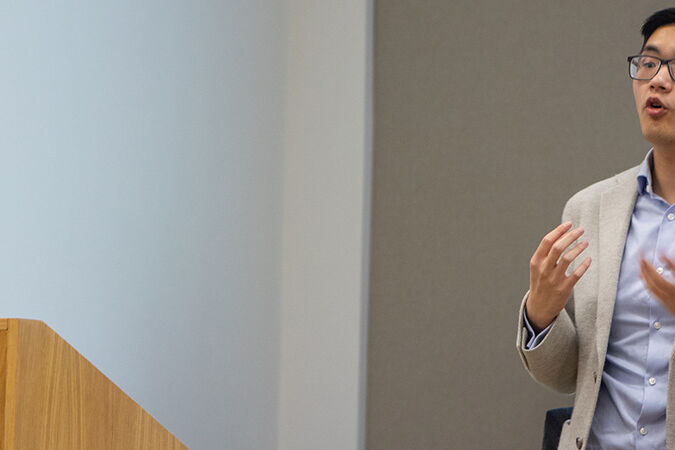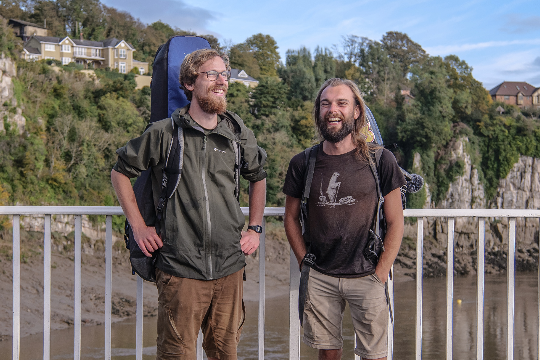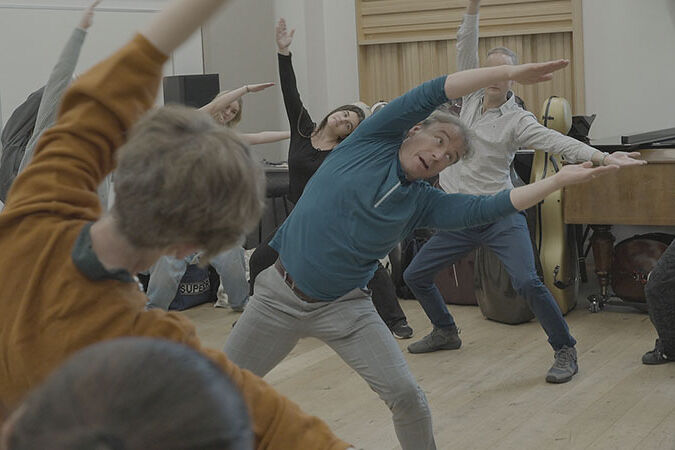
Blog

First year conservatoire student Hollie Westwood has been involved in the I:DNA project, a collaboration with theatre production company STAMP and the University of Warwick. The brief required a group of our BA (Hons) Applied Theatre students to create ‘invisible theatre’ (theatre integrated into a public place, which may not be recognised as theatre) as part of an art installation based on human experience of living with genetic disease.
I’m in my first year of Royal Birmingham Conservatoire's Applied Theatre course, which is all about using theatre to create change and exploring what it means to be human. Last semester, our course leader, Peter Wynne-Willson, was approached by a company called STAMP to work with them on an art installation in Millennium Point planned for February 2020. STAMP combines science, theatre and digital media to create work for a wide range of audiences. This particular project, called I:DNA, is a collaboration with researchers at the University of Warwick based on their research into the human experience of living with genetic disease, and how this knowledge can be valuable in screening for such diseases. The art installation features the iconic DNA helix, adorned with multi-coloured bags. Alongside this is a video which includes verbatim extracts from people with genetic diseases, in the form of spoken word and song. We were asked to create a performance to accompany the installation using the research that informed their creation, and a group of us jumped at the opportunity to put into practice the things we are learning on the course, in the real world.
STAMP gave us a great deal of creative freedom, simply asking us to create a performance piece to accompany the installation, and providing us with the research that informed their creation. The research was in the form of interviews with people who live with genetic diseases and their family members. We knew from the beginning that we wanted to create a piece of invisible theatre (theatre in a public place, which may not be recognised as theatre) which would be performed for visitors to the installation. After reading through the interview material and discussing our own experiences, we wrote a series of monologues about life with genetic diseases, from the perspectives of those living with them. These monologues are now being performed for the public as they view the installation, with each one following the same structure: an actor removes a bag from the sculpture and tells the public a part of their story.
On Friday 7 February, the exhibition had its official launch event. STAMP invited students and professionals to visit the installation and we got our first opportunity to perform our piece of invisible theatre. The researcher who led the project, Dr Felicity Boardman (University of Warwick), spoke about her research and how important it is that we do have a conversation about screening for genetic diseases and the importance of understanding how they affect real lives. She made a point that really struck me: the best way to measure the quality of life of people who live with a genetic disease is through talking to those people and listening to their experiences. I think that is why using theatre in projects like this is so essential; it allows people the chance to connect with real stories on a much closer, human level. It is in that intimacy that the power of projects like this lies, and it is a real privilege to be a part of that.




